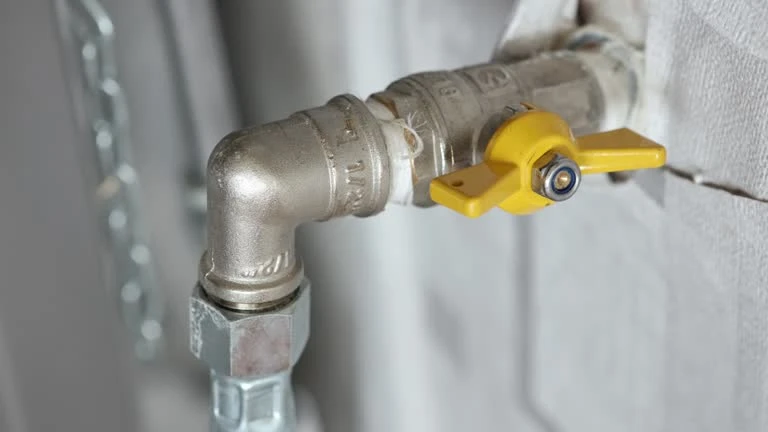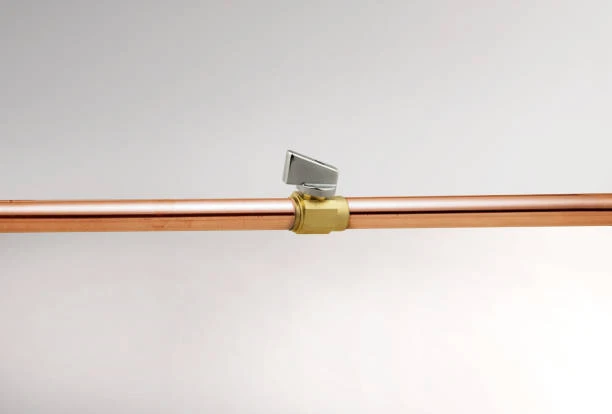In the world of heating systems, two essential components that often come up in discussions are the water heater and the heat exchanger. Both serve to manage temperature and heat transfer, but the way they function and their role in different systems can vary significantly. A control valve, however, is the unsung hero that helps regulate the flow of water or fluids in both systems. In this article, we will delve into the key differences between a water heater and a heat exchanger, with a focus on the role of the control valve in optimizing their performance.
Understanding Water Heaters and Heat Exchangers
Before diving into the specifics of how control valves influence these systems, it is important to understand the basic functions of both water heaters and heat exchangers.
What is a Water Heater?
A water heater is an appliance that heats water for domestic or industrial use. This could be for showers, sinks, or space heating. Water heaters are usually powered by electricity, gas, or even solar energy. The primary goal of a water heater is to heat water to a specified temperature, and it does so through various heating mechanisms such as immersion heaters, gas burners, or heating coils.
What is a Heat Exchanger?
A heat exchanger is a device used to transfer heat between two or more fluids. It doesn’t change the temperature of the fluids directly but rather facilitates heat transfer between them. Heat exchangers are commonly used in HVAC systems, industrial processes, and power plants. The goal is to efficiently transfer heat from a hotter fluid to a cooler one, without mixing the two fluids.

The Role of Control Valves in Heating Systems
What is a Control Valve?
A control valve is a mechanical device used to regulate the flow and pressure of fluids in a system. It works by adjusting the size of the opening through which the fluid passes, allowing for precise control over the fluid’s flow rate. Control valves are crucial in both water heaters and heat exchangers to ensure optimal performance.
In water heaters, control valves manage the flow of water, regulating the temperature to avoid overheating and ensuring consistent water delivery. In heat exchangers, control valves are used to regulate the flow of fluids through the system, ensuring the proper exchange of heat.
Why Control Valves Are Important in Water Heaters
In water heaters, a control valve regulates the water’s temperature by adjusting the flow of hot and cold water into the system. This ensures the water remains at the desired temperature without exceeding safety limits. For example, in a gas water heater, a control valve may regulate the gas flow to maintain the burner’s temperature. Similarly, in electric water heaters, control valves can manage the electricity going to the heating elements.
Control valves in water heaters are often integrated with thermostats to maintain a specific temperature. When the water reaches a pre-set level, the valve closes or adjusts to reduce the heat input, thereby saving energy and preventing accidents such as scalding.
Why Control Valves Are Important in Heat Exchangers
Heat exchangers typically use control valves to regulate the flow of the fluids that are being heated or cooled. For example, in a water-to-water heat exchanger, a control valve adjusts the flow of the heated fluid to maintain an efficient heat transfer rate. In industrial applications, this ensures that the fluid doesn’t overheat, which could damage the system, or cool too much, reducing efficiency.
In heat exchangers, control valves also help maintain pressure balance. Fluctuations in pressure can cause operational inefficiencies. Which is why constant monitoring and regulation are crucial to ensure smooth heat exchange processes.
Water Heater vs. Heat Exchanger: Key Differences
Although both systems rely on heat transfer, there are distinct differences in their operation and the way they use control valves.
- Primary Function:
- A water heater is designed to heat water to a specific temperature for use in homes or industries.
- A heat exchanger transfers heat from one fluid to another, usually without mixing them.
- System Type:
- Water heaters generally involve direct heating methods, using electric elements or gas burners.
- Heat exchangers involve indirect heating through heat transfer, which is more energy-efficient for large-scale systems.
- Control Valve Application:
- In water heaters, control valves regulate the flow of water, often in conjunction with thermostats.
- In heat exchangers, control valves regulate the flow of fluids between heat exchange surfaces to optimize efficiency and heat transfer.
- Energy Use:
- Water heaters typically use either gas or electricity, with the primary energy being converted into heat.
- Heat exchangers generally use the thermal energy of one fluid to heat or cool another. Which making them more energy-efficient for large-scale applications.
Choosing the Right Control Valve for Your System
When selecting control valves for either a water heater or a heat exchanger. It is important to consider a few key factors:
1. Flow Rate Requirements
Control valves must be selected based on the flow rate needs of your system. For water heaters, this means ensuring the valve can handle the required water flow without causing pressure fluctuations. For heat exchangers, ensuring the valve supports the heat transfer rate is critical for efficient energy use.
2. Valve Sizing
Choosing the right valve size ensures that the system can operate efficiently. A valve that is too small will restrict flow. While a valve that is too large will fail to control the flow properly.
3. Material Compatibility
Control valves must be made from materials that are compatible with the fluids they control. For instance, in industrial heat exchangers that use corrosive fluids, valves made from corrosion-resistant materials like stainless steel are essential.
4. Automation and Integration
For modern systems, automated control valves integrated with sensors or controllers allow for dynamic adjustment of flow rates based on real-time data. This enhances both efficiency and safety.
Conclusion
In the comparison of water heaters and heat exchangers, it is clear that both serve different purposes but often rely on the same type of control valve to optimize fluid flow and ensure safety. The ultimate goal of both systems is to provide consistent and efficient heat management. And the control valve plays a crucial role in achieving this. Whether you are maintaining a domestic water heater or managing an industrial heat exchanger. The control valve is an integral part of the system’s functionality and energy efficiency.
Frequently Asked Questions (FAQ)
- What does a control valve do in a water heater?
- A control valve regulates the flow of water, ensuring the water heater maintains the desired temperature and prevents overheating.
- Can a heat exchanger work without a control valve?
- While a heat exchanger can technically function without a control valve, the valve helps maintain efficient flow and optimal heat transfer. Which enhancing performance.
- How do I know which control valve is right for my system?
- The right control valve depends on your system’s flow rate, fluid type, and pressure requirements. Consult a professional to determine the correct size and material.
- Are control valves in water heaters adjustable?
- Yes, many water heaters have adjustable control valves that allow users to set the desired temperature for their hot water supply.
- What is the main difference between a water heater and a heat exchanger?
- A water heater heats water for use, while a heat exchanger transfers heat between fluids without mixing them. Which making it more suitable for industrial applications.


















